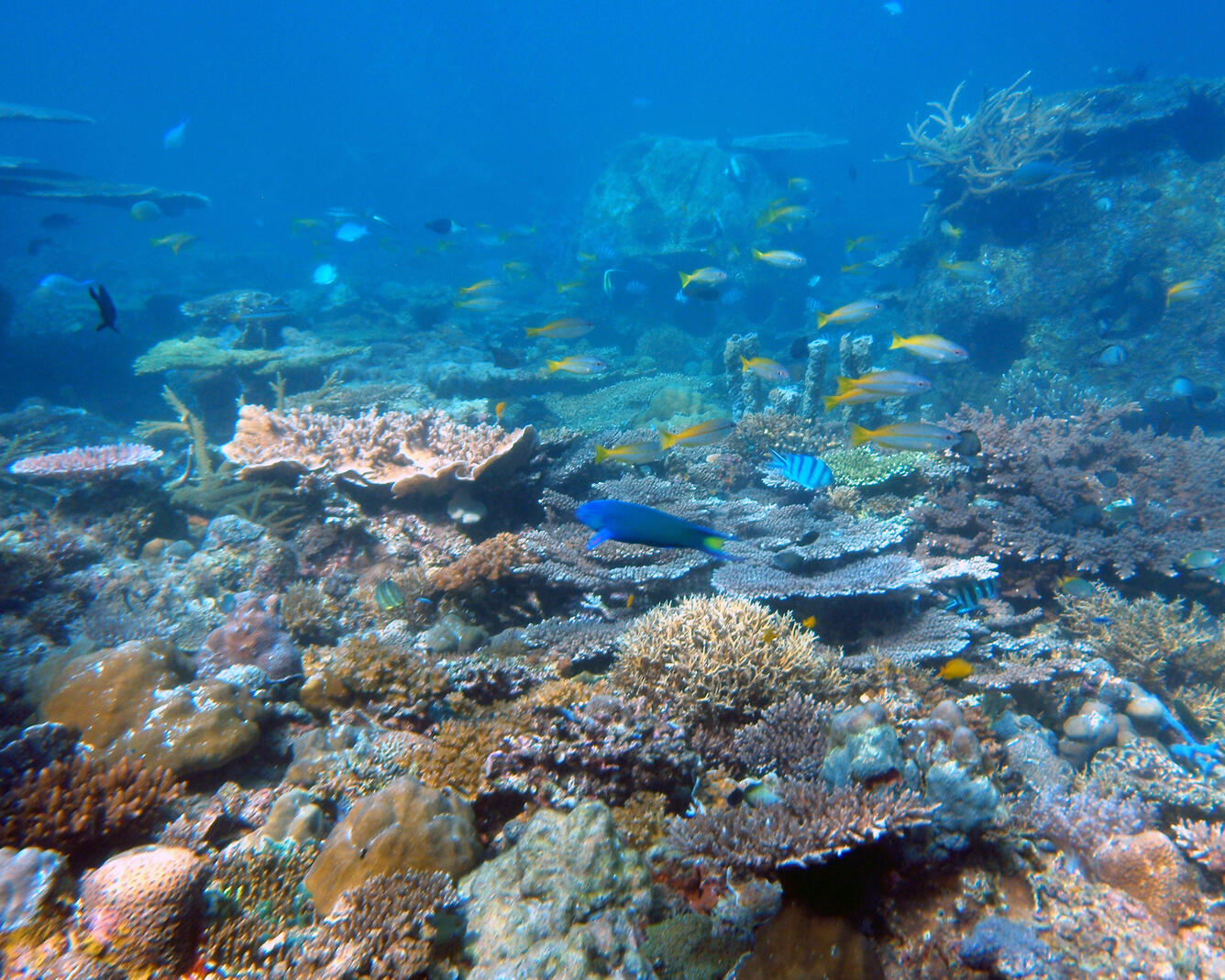
Shallow, tropical coral reefs face a number of threats, including climate change, habitat degradation, and activities like blast fishing, mining, dredging, and ship groundings. Restoration efforts for coral reef habitats have included deployment of built structures, including designed modules and underwater sculptures that can provide physical reef-like structures. Restoration practitioners and coastal managers incorporate built structures into coral reef-related applications around the world; however, synthesized evidence on the performance of these structures is not readily available. To help fill these gaps and guide management decisions, an interagency research team systematically mapped the global distribution and abundance of published information on the ecological (coral-related) and physical performance of built structure interventions in shallow (≤ 30 m), tropical (35°N to 35°S) coral ecosystems.
Researchers from NOAA, US Army Corps of Engineers, and the US Geological Survey assessed more than 20,000 scientific articles to determine the state of the science on the performance of built structures in shallow, tropical coral reefs. The information on built structures that we found stemmed from more than 250 articles spanning 50 countries and five decades. This synthesis highlighted knowledge clusters (or hotspots) and gaps in our understanding of built structures in coral reef settings. Notably, this is the first time NOAA has spearheaded a systematic map to gauge the state of the science on a topic.
Most built structures identified in this systematic evidence map were installed to support coral restoration, and, to a lesser extent, to mitigate environmental impacts or to provide coastal protection to communities. Built structures are commonly constructed from artificial, human-made materials, such as concrete and metal, but some structures are created from less popular materials like rubber, fiberglass, and clay. There is substantial information about how corals recruit to, grow on, and die on built structures; however, studies on coral physiology, microbiomes, and calcification on built structures were scarce. Some information exists about how built structures relate to waves, sediment, and currents, but nothing has yet been published on how built structures relate to water level or storm surge.
Our findings will help inform the appropriate and sustainable application of built structures in coral reef environments to support restoration, environmental mitigation, and other purposes.
Citation: Paxton, A.B., I.F. Foxfoot, C. Cutshaw, D.N. Steward, L. Poussard, T.N. Riley, T.M. Swannack, C.D. Piercy, S. Altman, B.J. Puckett, C.D. Storlazzi, and T.S. Viehman. 2024. Evidence on the ecological and physical effects of built structures in shallow, tropical coral reefs: a systematic map. Environmental Evidence 13 (12). DOI: 10.1186/s13750-024-00336-3.
